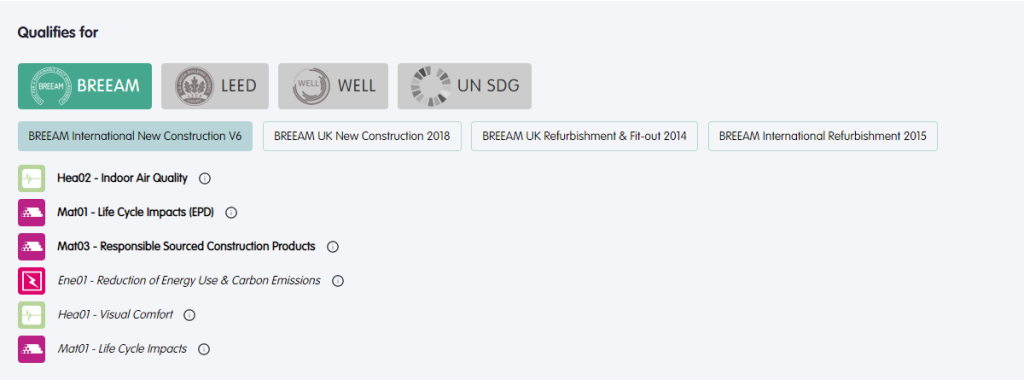Features: How products align with Green Building Rating Systems
Green Building Rating Systems (GBRS) are a set of voluntary standards that assess the performance of buildings and construction projects from a sustainability perspective. Examples include LEED BREEAM and WELL.
Have GBRS moved the needle?
Many of these rating systems have seen mainstream adoption; as a result, they have successfully managed to nudge the construction sector towards environmental consciousness.
Using these rating systems encourages environmental and socially responsible practices during the building design, construction and use. GBRS help to reduce the overall environmental impact of a building by promoting energy-efficient technologies, adopting renewable energy sources, water conservation and using materials with low embodied carbon. Additionally, they consider the health, comfort and well-being of the occupants of the buildings.
Adopting GBRS can add to the market value of a building. Meeting standards set by established GBRS signals a higher quality of construction and materials to potential buyers. In addition, GBRS provide third-party verification of a building’s environmental impact and encourages prospective buyers to invest in greener buildings.
Can GBRS increase their influence?
Steadily increasing pressures around Net Zero targets and ESG directives means that teams need to establish that a building is green by presenting multifactorial proof points. This will certainly mean higher GBRS rating targets for buildings and deeper considerations around embodied impacts. The complexity is increasing, and teams need to tick many boxes at the same time.
Also, there are several limitations to GBRS. They can be cost and time prohibitive. The market perception is that these are better suited to larger, more commercial projects because the process is paperwork heavy. Any efforts by GBRS to make the process less bureaucratic and more cost-effective will definitely increase its popularity. Contextualising and adapting these rating systems to regions and micro projects will also increase their reach and adoption.
Besides, finding and specifying products and materials that meet these frameworks can be particularly challenging for designers and specifiers because information needs to be digitised, standardised, well defined and comparable. But this is where Firstplanit can help.
How Firstplanit works alongside GBRS?
The Firstplanit platform takes a user-friendly approach to help teams discover sustainable products which align with the market-leading GBRS e.g. LEED, BREEAM, WELL and others coming soon.
Firstplanit does the heavy lifting on data analytics, mapping attributes against relevant GBRS concepts. Analysis looks beyond standardized technical datasheets and EPDs checking compliance with GBRS criteria and thresholds.
This helps specifiers find and compare materials/products that align with multiple GBRS efficiently and at a fraction of the cost. Assessments and checks by third party GBRS assessors are quicker as a result too. Cutting costs and saving time at multiple touchpoints during a project’s roadmap.

Who benefits?
- Developers/Architects: Quickly find and compare products/ materials that comply with the targeted Green Building rating system for your projects. Simple filtering system that every non-technical user can use.
- Product Manufacturers: Identify the GBRS credits your products can achieve. Consolidate information and documents so that specifiers can find all the relevant information quickly to specify your product and keep it specified through construction.
- Property Owners: Add value and future-proof the property by investing in products that demonstrate alignment with leading green building standards.
- Homeowners: Even if you don’t go for the rating, find the products that meet standards set by these systems- whether its health, energy efficiency, water saving you are after.
- Local Governments: Maintain and repair buildings using products and materials that align with GBRS systems when no expert is in place to guide decisions.
